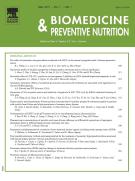Zea mays leaf extracts inhibits etoposide-induced apoptosis in primary chick embryo fibroblasts - 30/05/14
Abstract |
Chemotherapy drugs act on normal cells as well as cancer cells. Therefore, in the present study, the extent of cell death induced by etoposide-induced oxidative stress and the role of Zea mays leaf extracts were followed in primary cultured chick embryo fibroblasts (normal cells). Various apoptosis related parameters like cell viability, morphological changes, nuclear changes and apoptotic index were characterized. SRB and MTT assays were used to quantify the extent of cell death in the group exposed to etoposide, plant extracts and their combination. The treatment with etoposide exhibited cytotoxity in the primary chick embryo fibroblasts cells. The number of apoptotic cells increased in the oxidant treated groups. When administered along with etoposide, the leaf extracts resulted in a significantly decreased number of apoptotic cells. The maximum inhibition of etoposide-induced apoptosis was exhibited by the methanolic extract followed by the aqueous and chloroform extracts. Zea mays leaf extracts reduced the toxicity of etoposide in the normal cells and the leaf extracts, by themselves, did not cause any damage to normal cells when treated alone. These results indicate that the Zea mays leaves can render protection to chick embryo fibroblasts against etoposide-induced cell death.
Le texte complet de cet article est disponible en PDF.Keywords : Fluorescent staining techniques, Primary chick embryo fibroblasts cells, Zea mays leaves, Apoptosis, Viability assays
Plan
Vol 4 - N° 2
P. 161-169 - avril 2014 Retour au numéroBienvenue sur EM-consulte, la référence des professionnels de santé.
L’accès au texte intégral de cet article nécessite un abonnement.
Déjà abonné à cette revue ?


